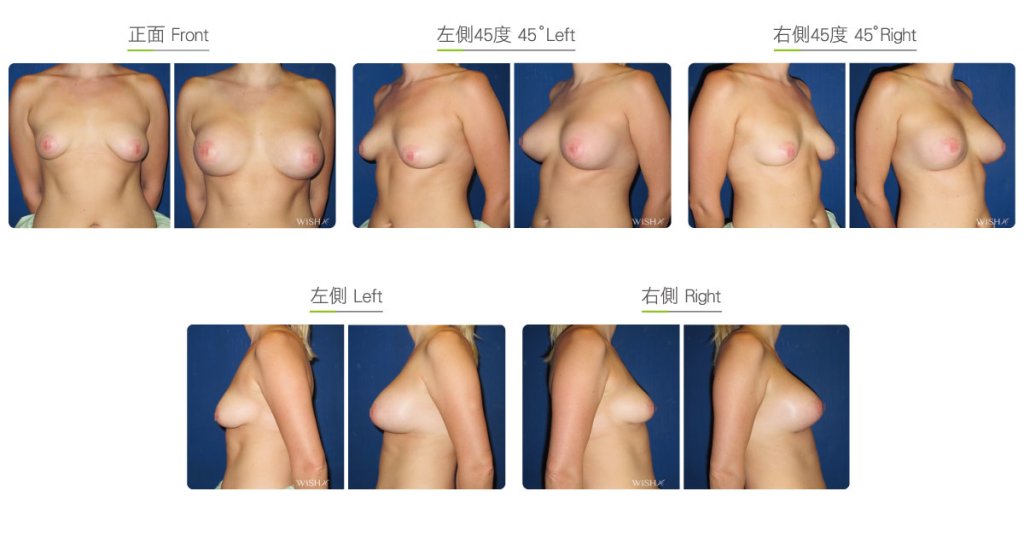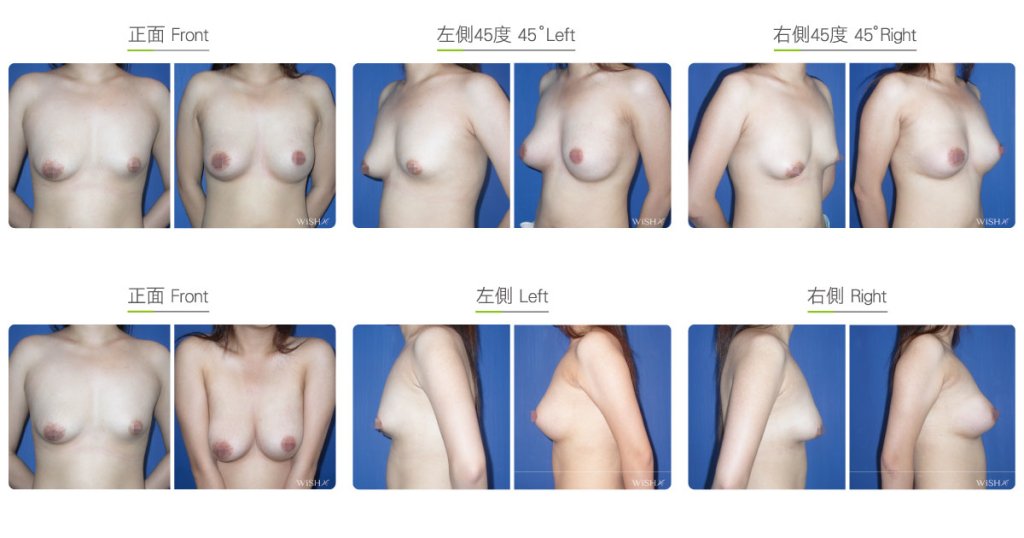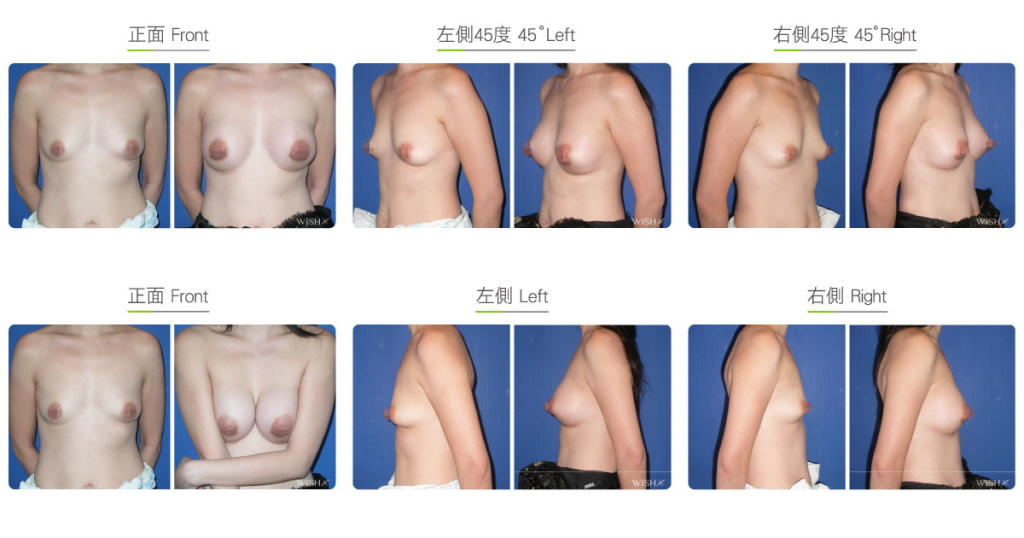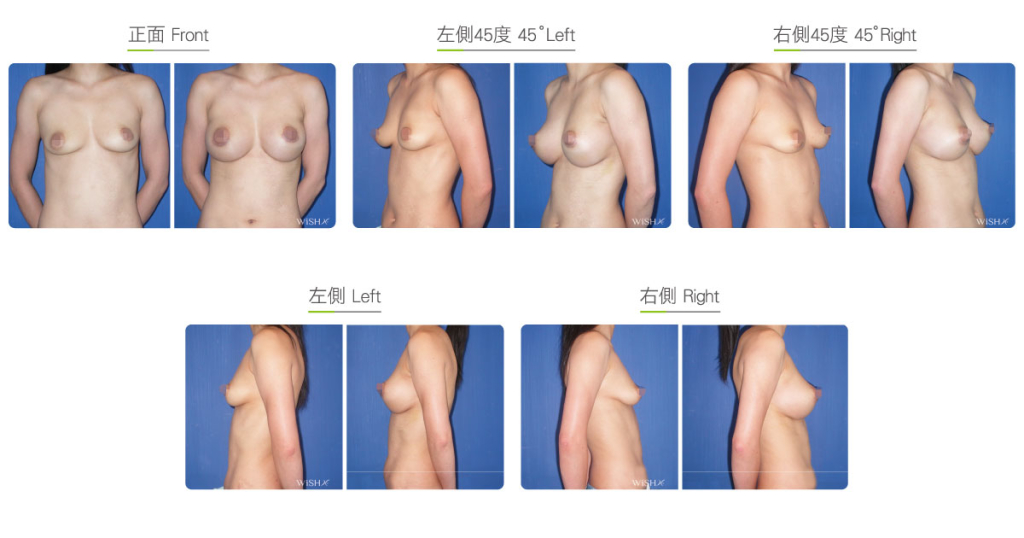Tuberous Breasts
Tuberous breasts, as the name suggests, are long and flat or tapered like a tube. The most prominent feature is that breast bases are particularly narrow or long, which may result in the pyramidal development of breast tissues. Therefore, they are also called cone, bamboo, or dumpling breasts. They require a more difficult type of corrective breast surgery. Patients generally have the following characteristics:
- Narrow and non-circular base of the breast that could either be flat or long
- Firm and tight breast tissues like cones
- Often accompanied by nipple/areola hypertrophy
Patients with tuberous breasts normally have a tight pectoralis and firm and dense breast structures. Surgery is more challenging, and the correction of the structure of mammary glands may be needed to achieve more esthetic breasts. Here are some special considerations and techniques for this surgery:
- Either subfascial or subglandular implant placement is preferred to avoid deformities such as implant displacement or double bubble that may be caused by the movement of the pectoralis major muscle.
- Periareolar or inframammary incision should be considered because such surgery mostly requires the radial dissection of mammary tissues to increase the breast coverage of implants. Thus, the surgical incision should be made via the shortest access to allow 360° of the radial separation of breast tissues.
- Implant size may be restricted by the extendibility of skin and breast base; breast augmentation with larger implants is less plausible
- Textured implants may be needed to maintain a stable shape and effect
Surgical conditions
Duration
0.5hr
- Type of anesthesia: General anesthesia
- Type of incision: Periareolar or inframammary incision
- Recovery: Within 3–5 days
- Removal of stitches: 7–10 days
General instructions
No food and water on the day of surgery
0hr
- Frequent stretching should be performed for 1 month postoperatively to prevent axillary scar adhesion.
- Tasks and exercises that require excessive arm strength should be avoided, and underwired or push-up bras should not be worn for 3 months postoperatively.
- Smoking and consumption of collagen or vitamin C should be avoided for 3 months postoperatively to prevent the formation of capsules.
- Consistent and regular breast massage should be performed for 6 months postoperatively to maintain breast shape and softness.
Possible complications
- Capsular contracture
- Breasts too firm
- Mammary gland infection
- Double bubble deformity
- Insensitive or oversensitive nipples (temporary)
- Implant leakage or rupture
Surgical advantages
-
The procedure can correct unesthetic breasts with implants and also confer the effects of augmentation.
-
The hollowness in the upper half of the breasts can be effectively filled.
-
The results are stable and sustainable.
Surgical drawbacks
-
Implant size may be restricted by the width of breast tissue base.
-
Corrected breasts may still appear firm.
-
Damage to mammary gland tissues may be larger than that in regular breast implant procedures.
-
Nipples may become even more protruded after surgery.
Possible procedures in conjunction
Before & After
These photographs represent typical results, but not everyone who undergoes plastic surgery will achieve the same.







